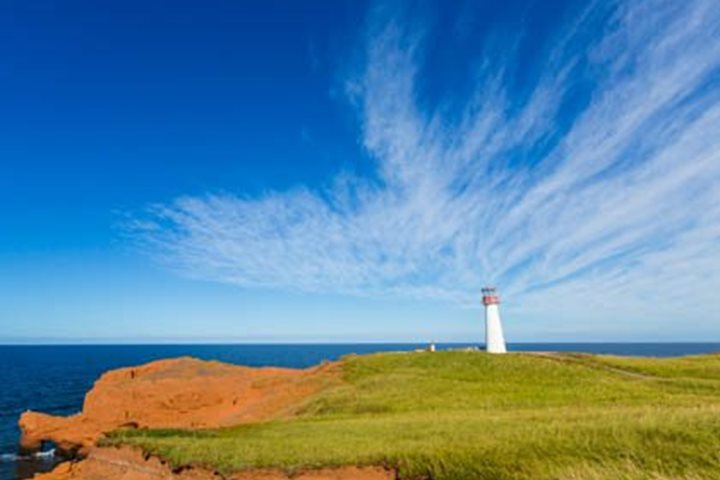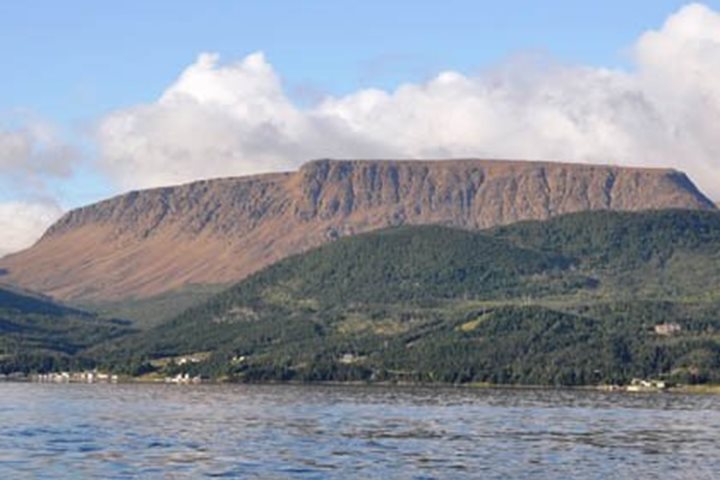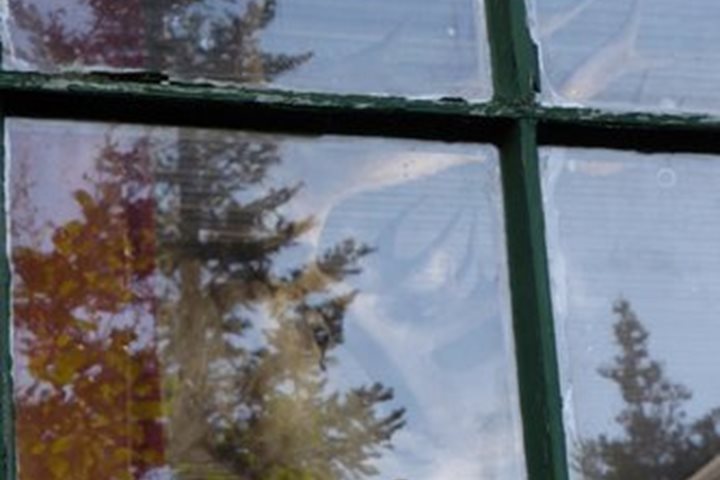We spent the morning sailing eastward within the Parry Channel off the south coast of Devon Island. By midday, we had reached Philpots Island, a geological structure consisting of ancient red granite that is part of the Ellesmere-North Greenland geological complex. It has been dated to 1.6 billion years in age! The plan was to go ashore on rocky Philpots Island for a chance to hike about on the tundra and search for interesting flora and fauna, including extensive moss beds with interspersed flowering vascular plants, various bird species, Arctic hares, and perhaps even musk oxen.
Almost as soon as we anchored in a broad bay, we sighted a lone polar bear resting on a promontory looking over the entire shore where we hoped to make our landing. As a rule, we do not go ashore within sight of polar bears, especially thin, disheveled, hungry-looking bears like this one, so we had to make new plans. It is a beautiful area and we did not want to just give it up to the bear, so we decided to offer Zodiac cruises. This worked out great. The polar bear was curious about what we were doing and watched us from his perch, sometimes standing up and staring, and at one point he even started to walk down to the shore toward my Zodiac for a closer look. Well, that kind of spooked us and we moved away, because the breeze was slowly driving us in towards the shore and we didn’t want a close encounter.
Right at the point of land near the promontory where the bear was situated, we found a group of walruses hanging out in the shallow water. It was fun watching them snort and blow spray from their nostrils, almost like whale spouts, and kind of cavort in the shallows. As we could see, the bear was well aware of their presence. He later very casually made his way down toward the walruses and just lay down on a flat boulder for a good view of them. His feigned nonchalant and uninterested attitude didn’t fool the walruses for a second. They knew he was there…watching. At about this time, a mother with a pair of two-year-old cubs were sighted on the island from the ship’s bridge and several Zodiacs went over for a closer look. They quickly disappeared over the top of the ridge, but they made for a total of four bears within sight of our originally planned landing!
In the open water offshore, there were plenty of impressive icebergs recently calved from a huge glacier directly across from our anchorage. We examined the closer ones, some of which absolutely towered over our heads. Of course, photographs never do them justice, so one always has to say “You really had to be there, because they are so much bigger than they appear in the photo.” It’s easy to understand the notion of those ice castles of mythology when imagining Neolithic peoples occasionally seeing such things floating far off in the distance from their farms in northern Scotland or wherever. Many of these particular icebergs showed us the phenomenon of blue ice…not an optical illusion, but the result of dense, clear terrestrial ice allowing only the shorter bluish wavelengths of sunlight to pass through, while filtering out the longer reddish wavelengths.
In the late afternoon, a single bull muskox was spotted on the island down near the shoreline, where he was obviously grazing in amongst clumps of grass that were scattered within moss beds behind a raised berm of small boulders above the beach. He was totally unconcerned by our presence. This beast was impressive from our vantage point offshore, looking like a hulking, hairy brute. But, we know that is not really the case, since he is covered with an incredibly thick coat of long hairs overlying a dense layer of underfur known as quviut (very valuable wool used in producing the lightest, finest knitted products available today). If he were shaved all over, it would be obvious this animal is actually more closely related to sheep and goats than it is to true cattle. When we lifted anchor in the early evening, the ship set a course northward for Ellesmere Island.







